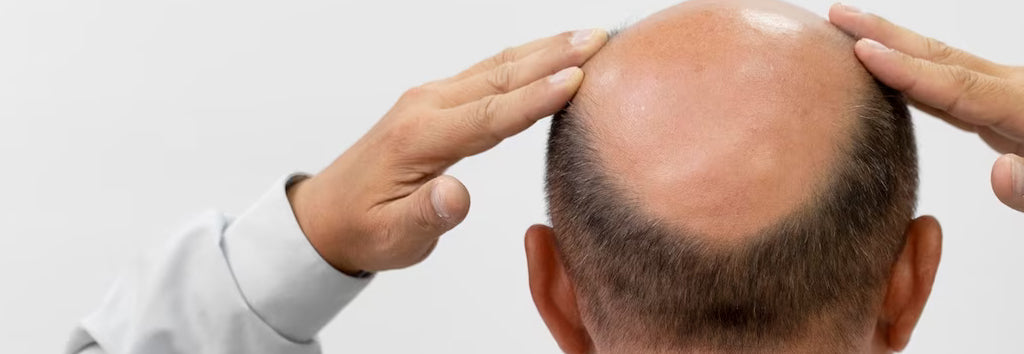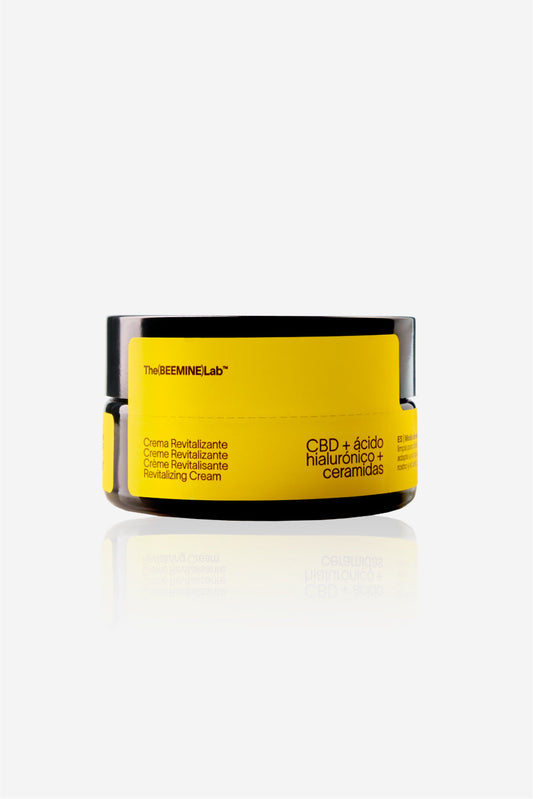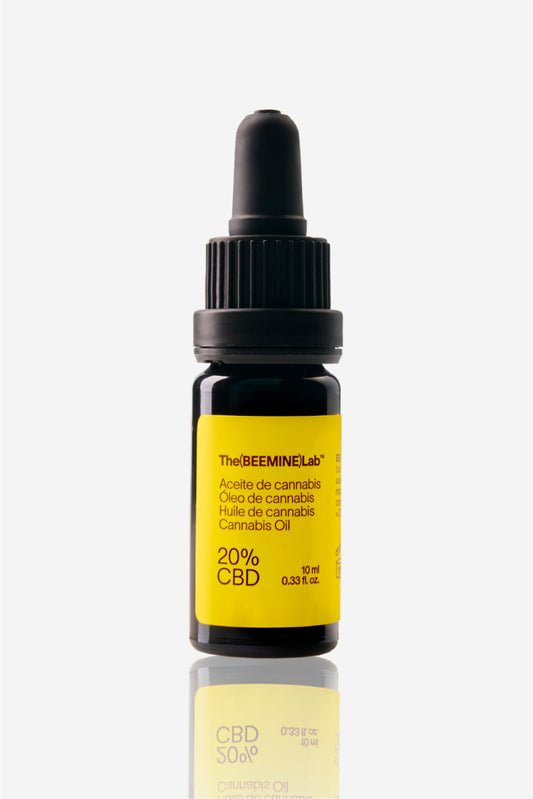What is Alopecia?
Alopecia is the abnormal loss of hair and/or hair from the eyelashes, armpits, genitals and beard. It is also known as baldness and affects 12% of the world's population. It can occur in completely healthy people and is potentially reversible, excluding Alopecia resulting from scarring with loss of the hair follicle.Symptoms of alopecia
Diffuse or area-specific hair loss and thinning, often with previous itching and pruritus. Secondary symptoms are psychological in nature and due to social stigma or associated with psycho-physical stress factors.
Causes of alopecia and frequency of hair loss
In 95% of cases, especially in men, Androgenic Alopecia occurs , the causes of which are genetic and hormonal. Male hormones or androgens act on genetically predisposed hair follicles, causing their deterioration. In women, hair loss is diffuse, while in men, bald patches are created. Alopecia Areata , on the other hand, is an autoimmune disease that is predominantly caused by stress factors. It occurs predominantly in young people and causes the appearance of oval bald patches, although in most cases the hair grows back within a few months. Other factors that facilitate the appearance of alopecia are: lack of certain nutrients in the diet, stress, thyroid problems, anemia and excessive use of cosmetics. Treatments such as chemotherapy or radiotherapy can also cause it.Diagnosis and treatment for alopecia
Diagnosis is based on a complete analysis and a thorough examination of the clinical history and, in some cases, a biopsy of the scalp. It is possible to act in the nutritional, psychological and cosmetic fields, although there are specific pharmacological treatments for androgenic alopecia (androgen blockers) and for alopecia areata (corticosteroids or immunotherapy). 1-2-3-4-5Alopecia and Endocannabinoid System
Different studies have highlighted the important and complex relationship between hair growth and the Endocannabinoid System , present in all skin tissue. The endocannabinoid receptors CB1, CB2 and TRPV participate in the regulation of hair follicle proliferation and a dysregulation of Anandamide levels can negatively influence this mechanism. In particular, stimulation of CB1 and TRPV receptors would be related to a loss and regression of hair follicles, while inhibition or modulation could be favorable. 6-7-8-9-10Alopecia and CBD: Properties
Thanks to its properties, CBD could represent a good therapeutic alternative for the direct and indirect symptoms of Alopecia:- favors the proliferation mechanisms of hair follicles
- helps regulate Anandamide levels and the balance of the Endocannabinoid System
- favors symptoms related to excessive stress and anxiety
- modulates the immune system and helps regulate inflammatory processes
How many drops of CBD do you recommend for hair loss?
According to the studies carried out, it is recommended to use low doses both internally (not regulated in the EU) and externally to obtain maximum benefit. For topical use, it is advisable to apply a low concentration CBD cream once a day to the area to be treated for at least a few months. For internal use (not regulated in the EU), it is advisable to start with a low concentration oil with minimum doses 1 or 2 times a day. It is recommended to consult a health professional before using it in this way.Is CBD safe? Precautions
CBD is a very safe substance even when used in large quantities, however, care must be taken when taking medications or if you suffer from heart or blood pressure problems. For this reason, in these cases it is always advisable to contact a health professional.Possible side effects
Adverse effects are usually mild to moderate in intensity and may include tiredness, drowsiness, dry mouth, dizziness and decreased appetite. Literature:- https://www.cun.es/enfermedades-tratamientos/enfermedades/alopecia-calvicie
- https://www.aad.org/public/diseases/hair-loss/types/alopecia
- https://medlineplus.gov/spanish/ency/article/001450.htm
- Lee, H.H., Gwillim, E., Patel, K.R., Hua, T., Rastogi, S., Ibler, E., & Silverberg, J.I. (2020). Epidemiology of alopecia areata, ophiasis, totalis, and universalis: A systematic review and meta-analysis. Journal of the American Academy of Dermatology , 82 (3), 675–682. https://doi.org/10.1016/j.jaad.2019.08.032
- Adil, A., & Godwin, M. (2017). The effectiveness of treatments for androgenetic alopecia: A systematic review and meta-analysis. Journal of the American Academy of Dermatology , 77 (1), 136–141.e5. https://doi.org/10.1016/j.jaad.2017.02.054
- Smith GL, Satino J. Hair Regrowth with Cannabidiol (CBD)-rich Hemp Extract - A Case Series. Cannabis. 2021, Volume 4 (1). DOI: 10.26828/cannabis/2021.01.003
- Telek, A., Bíró, T., Bodó, E., Tóth, BI, Borbíró, I., Kunos, G., & Paus, R. (2007). Inhibition of human hair follicle growth by endo- and exocannabinoids. FASEB journal: official publication of the Federation of American Societies for Experimental Biology , 21 (13), 3534–3541. https://doi.org/10.1096/fj.06-7689com
- Baswan, S.M., Klosner, A.E., Glynn, K., Rajgopal, A., Malik, K., Yim, S., & Stern, N. (2020). Therapeutic Potential of Cannabidiol (CBD) for Skin Health and Disorders. Clinical, cosmetic and investigative dermatology , 13 , 927–942. https://doi.org/10.2147/CCID.S286411
- Sugawara, K., Zákány, N., Tiede, S., Purba, T., Harries, M., Tsuruta, D., Bíró, T., & Paus, R. (2021). Human epithelial stem cell survival within their niche requires "tonic" cannabinoid receptor 1-signalling-Lessons from the hair follicle. Experimental dermatology , 30 (4), 479–493. https://doi.org/10.1111/exd.14294
- Tóth, K.F., Ádám, D., Bíró, T., & Oláh, A. (2019). Cannabinoid Signaling in the Skin: Therapeutic Potential of the "C(ut)annabinoid" System. Molecules (Basel, Switzerland) , 24 (5), 918. https://doi.org/10.3390/molecules24050918
- Szabó, Imre & Lisztes, Erika & Szollosi, AG & Szegedi, Andrea & Biro, Tamás & Oláh, A.. (2017). 263 (-)-cannabidiol differentially influences hair growth. Journal of Investigative Dermatology. 137. S238. 10.1016/j.jid.2017.07.261.
- Park, YJ, Ryu, JM, Na, HH, Jung, HS, Kim, B., Park, JS, Ahn, BS, & Kim, KC (2021). Regulatory Effect of Cannabidiol (CBD) on Decreased ?-Catenin Expression in Alopecia Models by Testosterone and PMA Treatment in Dermal Papilla Cells. Journal of pharmacopuncture , 24 (2), 68–75. https://doi.org/10.3831/KPI.2021.24.2.68







